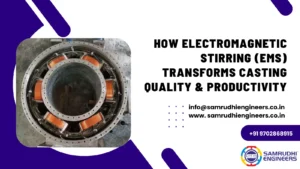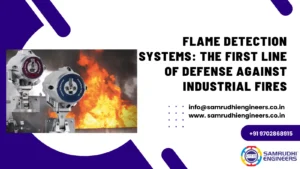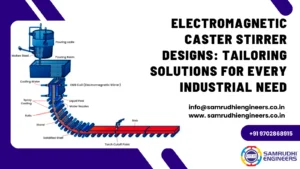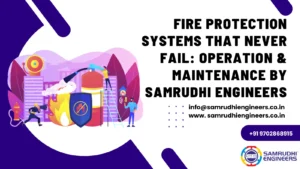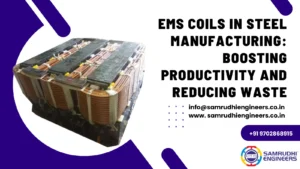Electromagnetic stirrer (EMS) is used on a wide scale within the modern industry. There are only a few people who are aware of the development industry. The EMS system, or electromagnetic stirring systems, is used within the continuous casting process of the steel making industries for the generation of steel products of supreme quality.
Though the operational principles of the EMS system facility are extensively applied and well established, the original stirring impacts on the molten metal demonstrations are desired to seek comparative investigations. If you are looking for a suitable choice to accomplish the needs to investigate the EMS phenomena, you need the Electromagnetic stirring technology’s hot-mode experimental apparatus along with liquid zinc, since the test object is established successfully within the laboratory.
3D finite element analysis is used to confirm the experimental apparatus performance. Through the use of the well-constructed appliance, the operational conditions’ relative behaviours are investigated thoroughly. It allows you to realise the features of the Electromagnetic stirring (EMS) systems facilities. In this article, we will discuss the development of the electromagnetic stirring.
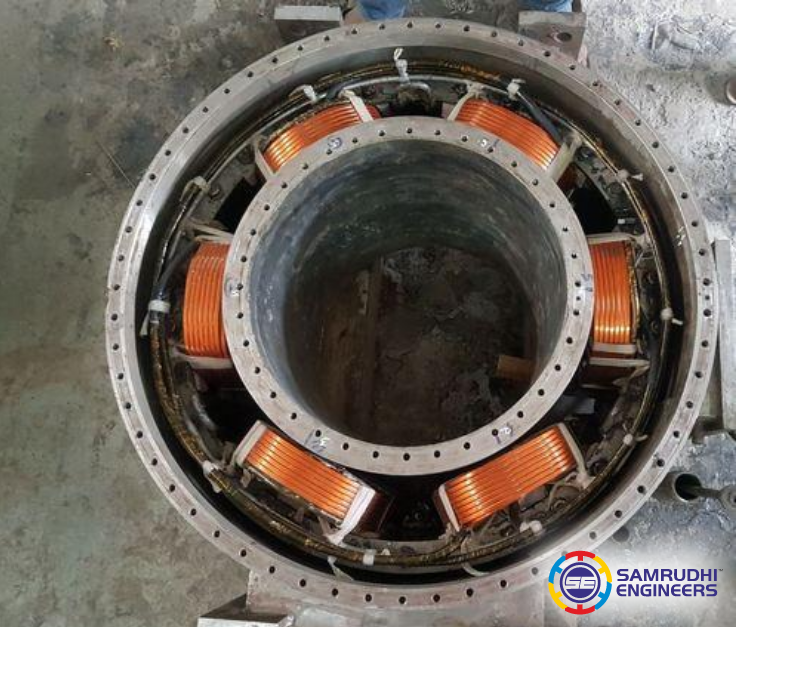
Electromagnetic forces discussions and investigations
Because the electromagnetic stirring system is based on linear induction motors, the operational forces will be generated by the specific interactions of induced eddy currents and magnetic fields. The speed difference between the flowing motel metal and the travelling magnetic field is regarded as a crucial factor which impacts the generated force.
In the EMS systems force analysis, the speed differences’ relative values are known to be equal to one, as the magnetic field’s travelling speed will be faster than that of the molten metal’s. With the application of the stator winding currents with 4Hz electrical frequency from the stator core length, the effective travelling magnetic field’s average speed, which is produced by the winding currents, will be around 4.08m/s.
But, from the experimental inspections, the average stable liquid Zn’s operational speed will be about 0.50 m/s. As you take the force turbulence owing to 3D magnetic field diversities and mould the mechanical structures, the average forces will be applicable for driving the molten metal’s, depending on the standstill fluid conditions, which are considered to be the most compact and reasonable approach.
Traditional EMS procedures
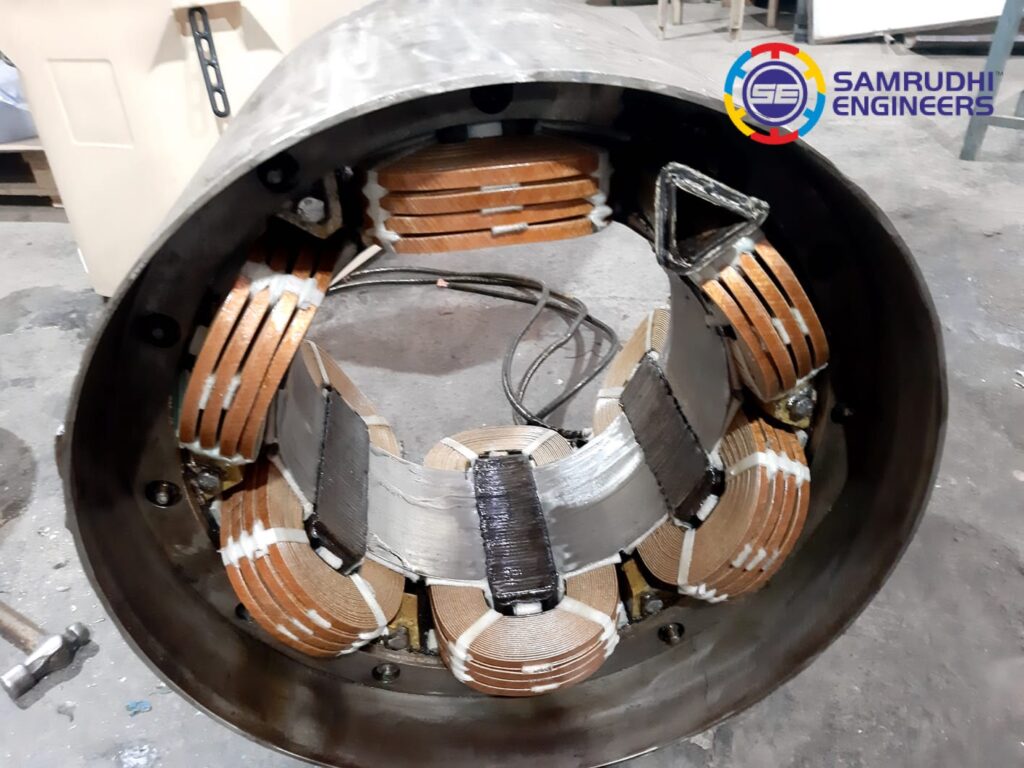
The Swedish ASEA invented EMS, or electromagnetic stirrer. Dreyfus Dr. discovered in 1932 that a low-speed inductive moving magnetic field generates strong stirring impacts on molten steel using Faraday’s principle of electromagnetic induction.
In the year of 1948, the electromagnetic stirrer was applied and manufactured to produce the furnace steelmaking. The EMS, or electromagnetic stirring technology, will be applicable to the continuous casting machine as steelmaking technology matures and develops.
The Austrian Kapfanberg plant’s borehole caster started the casting of the alloy steel with electromagnetic stirring in 1960. It was in 1970 when, for the very first time, the IRSID, or French Institute of Steel Research, executed the linear electromagnetic stirring technology’s industrial test on the billet caster.
BSC or British Steel is known to execute similar kinds of tests. Stabilized steel’s subcutaneous quality is improved by electromagnetically stirring or EMS. Owing to the electromagnetic field’s low frequency, there was a considerable improvement in the stirring efficiency.
The round continuous casting machine's rotary stirring technology
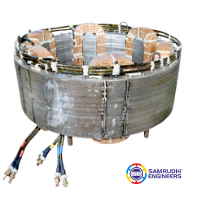
A subsequent breakthrough was made in the round billet continuous casting machine’s rotary stirring technology. Karl Heinz-Spitzer used numerical simulation and model experiment to conduct a thorough study of the flow field and electromagnetic field within the molten steel under the rotating sirring. The slab caster’s electromagnetic stirring technology will be developed at a later stage.
In the year 1973, the first electromagnetic stirrer for the secondary cooling zone’s continuous casting machine was used on a wide scale at Nippon Steel. The French Steel Institute makes the right use of the electromagnetic stirring technology on the slab caster at the West German Eilingen Plant. Such a technique includes the installation of the coils within the cooling water bank behind the mold’s wider surface copper plate, which helps to generate vertical linear stirring.
The latest developments in China
In the latter part of 1970, China started the study of electromagnetic stirring technology. From the latter part of the 1970s to the middle part of the 1980s, China started exploring EMS, or electromagnetic stirring technology. After the performance of the industrial and testing operations, you will not see that the performance is not that stable.
During the middle part of 1980, China imported different special steel casters through the use of electromagnetic stirring. Though the stirrer plays an integral role in the continuous casting EMS technology development across China, it reveals that China will not be capable of manufacturing the EMS devices of high performance during that time. DURING the late 1980s, China made several efforts to research electromagnetic stirring technology.
After performing hard work for more than ten years, EMS technology research across China will see more progress and more breakthroughs.
The techniques to improve the cast steel product’s techniques are crucial in the Electromagnetic stirrer for slab continuous casting machine process. It plays an integral role in the development of the continuous casting process.
Apart from the modification of the jet flow angle, the electromagnetic technique allows the control of the fluid flow without the contact between the stirrer and the liquid steel, which is used in the form of the flow control technique. The EMS, or electromagnetic stirring, is a kind of electromagnetic technique which produces the fluid flow offered by the linear induction motor.
The EMS technology has been used in continuous steel casting for several years. However, the impact of the benefits and the application of liquid stirring will depend on the steel grade, section size, and the product application.
The EMS technique’s application will promote the production of the equiaxed crystallic zone within the strand. It leads to the solidification structure’s refinement. In addition, it leads to a decrease in the inclusion content. Moreover, it plays an integral role in bringing an improvement in the cast product’s inner structure, subsurface, and surface quality. Samrudhi Engineers is a well-renowned company offering the services of electromagnetic stirring development.

